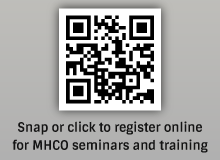Elder Abuse in our society is hidden. For every one case that is reported, 24 cases go unreported (National Clearinghouse on Abuse in Late Life). There are several factors that contribute to this. An older adult is reluctant to admit that abuse is happening. Guilt and shame are silencers in Elder Abuse. Some folks do not have the capacity to report that abuse is happening. This could be a capacity issue but also is impacted by Generational Culture. Does the older adult know that rape in a marriage is rape? Rape in a marriage was legal until 1976. Is the older adult comfortable talking about his or her body? Another reason cases go unreported is because no one inquires how an older person is doing with changes in their lives. For example, when an adult child moves back in with the older person the assumption is it's a positive change. Does the older person get asked about the change in his or her living situation? Elder abuse can also be physically hidden. When an older adult is hurt it can go unnoticed because of the belief that bruises and falls are part of the aging process.
While we know that anyone in a trusting relationship with the older person has the potential to be abusive, the dynamic is still predominantly intimate partner violence. This can be a long term relationship that has had abuse occurring all throughout the history of the relationship. Another form is a new relationship, possible post-divorce or widowed. In this relationship an older person may have experienced abuse in the past or this may be his or her first experience with abuse. Late Onset is a description of a relationship that has changed with an organic condition. The abusive person could have been controlling and verbally abusive and now is physically abusive. Or abuse may have not been present in the history of the relationship and now is, due to an organic condition such as dementia or capacity changes. Another dynamic is a person who was abused in the past and is now abusing the abuser. Believing, safety planning and collaboration are key in supporting the older survivor.
Take action by not letting the older folks in your lives be invisible. Try to notice when your older neighbor isn't around or big changes occur in his or her lives. An adult child moving in, mobility changing, caregivers that aren't consistent or anyone that appears to be controlling the older person's life. Are the same support folks coming around or has something changed? Try to give that older adult some private space to have a safe conversation. Often, if the abuser thinks the older adult might be asking for help or telling others about the controlling behaviors, the abuser will retaliate. This could be punishing, physically and emotionally abusing or further isolation. Connecting with your local Adult Protective Services agency, Domestic Violence Agency and Social Service Senior agencies are a key way to help the older adult. The collaboration of these agencies can provide protection and support by the way of Elderly/Disabled Persons Abuse Prevention Act, criminal charges, emotional and resource support.

